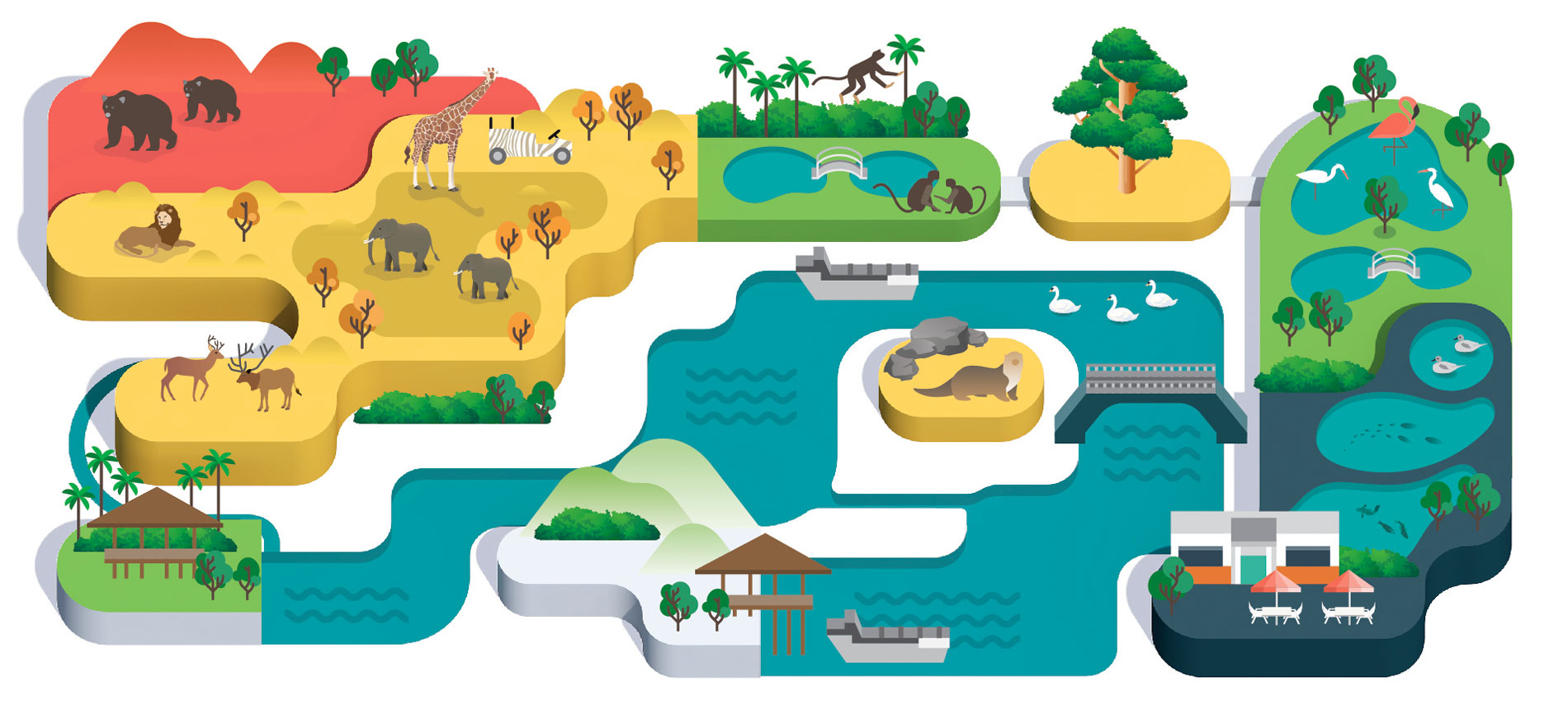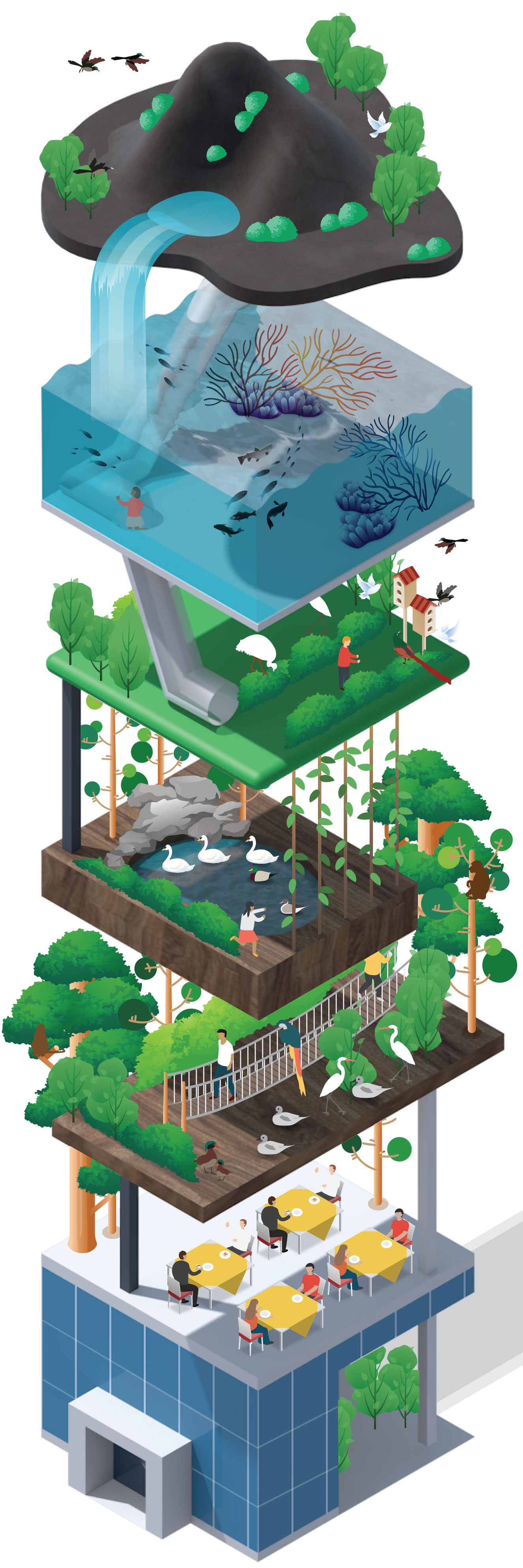A slew of challenges from animal rights activism to financial pressures have forced the leaders of American zoos to rethink their footprint and purpose.
The cutting-edge zoos that could emerge in years to come look different depending on their location, size and structure. Here are three types—and sizes—of zoo adapted from the thoughts of visionary landscape architect Jon Coe. They represent just the tip of the iceberg for how zoos might change in the coming decades.
Elite medium-sized zoo

These zoos are best for smaller mammals or limited numbers of larger animals and could focus on a single category, like big cats. Pathways might allow animals to leave their small enclosures while interactive exhibits highlight conservation and offer visitors experiences beyond real-life animals.
Elite mega zoo

These zoos can accommodate most species thanks to large roaming areas. Zoos like this may also become the only home of large animals like elephants that need space. Visitors might view the animals in safari-like settings, traveling to the animals within their habitat. Some exhibits would combine species to simulate wild ecosystems.
Any species, really, thanks to large roaming areas. Zoos like this may also become the home of large animals like elephants.
The high-rise zoo

These urban zoos could accommodate animals that able to be confined to a narrow space. These could include aquatic species along with a slice of the rain forest. Birds could use the space as a habitat while also spreading their wings in the open air only to return to their home in the zoo. Sea, cliff and forest attractions could be linked by special tubes to give visitors an underwater view of an ecosystem. Canopy walkways and tree houses could also be integrated. Nocturnal species could rotate with diurnal ones, keeping the zoo open 18 hours a day
More Must-Reads From TIME
- The 100 Most Influential People of 2024
- Coco Gauff Is Playing for Herself Now
- Scenes From Pro-Palestinian Encampments Across U.S. Universities
- 6 Compliments That Land Every Time
- If You're Dating Right Now , You're Brave: Column
- The AI That Could Heal a Divided Internet
- Fallout Is a Brilliant Model for the Future of Video Game Adaptations
- Want Weekly Recs on What to Watch, Read, and More? Sign Up for Worth Your Time
Write to Justin Worland at justin.worland@time.com